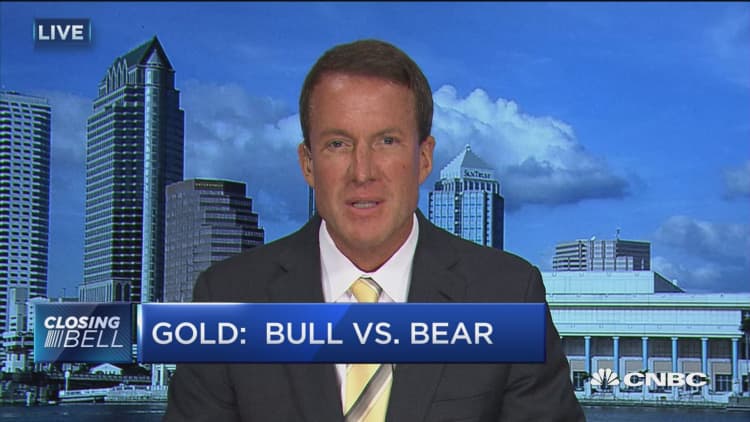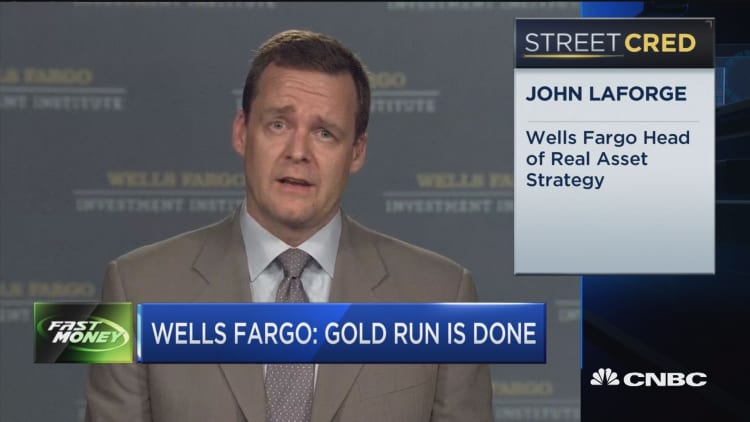Gold slipped on Thursday as U.S. jobs data supported the dollar.
Private sector payrolls rose more than expected in June, led by gains in small-business jobs, according to a report Thursday from ADP and Moody's. Private sector jobs grew by 172,000, while economists polled by Reuters forecast a gain of 159,000. The May number was revised down to 168,000 from 173,000.
Spot gold was at $1,360.14 an ounce, down 0.25 percent.
U.S. gold futures for August delivery settled down $5 at $1,362.10, coming off lows of the session. A fund that tracks gold miners was down 3.06 percent.
Gold had rallied to its highest level since March 2014 a day earlier on the back of concerns about Britain's vote to leave the European Union.
Financial markets have been extremely volatile since Britain voted in a referendum on June 23 to leave the EU, knocking equities and pushing some bond yields to record lows. The moves have boosted the appeal of so-called safe-havens such as gold and silver.

Spot prices reached their highest level since March 2014 on Wednesday at $1,374.91 an ounce but have struggled to maintain those levels as stocks and the U.S. dollar rose.
Mitsubishi analyst Jonathan Butler said while the stronger dollar was a headwind for gold, it still looked set for further gains after rallying more than 10 percent since the Brexit vote.
"I think gold could make further gains towards $1,381, the 38.2 percent Fibonacci retracement of 2011 high to 2015 low, and above that the $1400 psychological level," he said.
Traders are awaiting further clues on the outlook for Federal Reserve policy from Friday's U.S. non-farm payrolls (NFP) data, seen as a barometer of the economy's health.

Gold jumped last month after data showed a slowdown in hiring in May. Another weak reading could indicate that the Fed will hold off on further rate increases, particularly given the economic uncertainty following the Brexit vote.
"In the last few weeks we've seen a two-step move. First, we had the Brexit vote, which led to a rise in safe-haven demand, and then we saw markets starting to reprice monetary policy among central banks," Danske Bank analyst Jens Pedersen said.
"We had these two factors working in the same direction for gold."
Gold is highly sensitive to rising U.S. interest rates as they lift the opportunity cost of holding non-yielding assets such as bullion, while also typically boosting the dollar, in which the precious metal is priced.
"In the short term, I do see a risk that the dollar will rise further, so that will again cap the upside for gold," Pedersen said.
Elsewhere, data showed China's gold reserves rose to 58.62 million ounces at the end of June from 58.14 million a month before.
Silver futures were down 1.97 percent at $19.81 an ounce, while platinum futures were up 0.4 percent at $1,095.20 an ounce and palladium futures were up 0.4 percent at $610 an ounce.
— CNBC's Fred Imbert contributed to this report.

